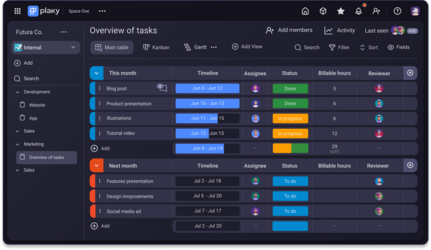The Era of “Pings and Pongs”
Imagine there is an office just around the corner; employees were bound to their workstations, hammering away at the keyboard to respond to emails, Slack messages, and meeting invitations as quickly as the human eye can flick. The motto? “Real-time is the only time!”
But then things shifted. Folks were finding they spent more time replying to messages than getting anything done. That’s where asynchronous communication came in—the unsung hero we never knew we needed.
What Is Asynchronous Communication?
Before we get started, let’s get the fundamentals right. It is where messages are sent without a promise of a prompt reply. Consider emails, video messages left on record, or even old-fashioned letters (yes, they still work!).
Put that alongside synchronous communication, where the back-and-forth happens right away—think Zoom meetings, voice calls, or an intense game of ping-pong where you can’t even lose your spot.
And remember, we’re not saying real-time communication isn’t valuable, but our modern, distributed, and hybrid workforce is proving that asynchronous communication is no nicety; it’s a necessity.
Social Change: The Evolution: From Carrier Pigeons to Slack Messages
A couple of centuries back, horseback messengers rode across kingdoms bearing handwritten missives. A couple of decades back, office workers huddled around fax machines anticipating crucial memos. Today, we experience a communications explosion, and yet most of us are wallowing in notifications.
Come asynchronous communication, allowing us to control our time instead of being held hostage by relentless pinging. Imagine if medieval knights used email instead of smoke signals—wars would’ve been scheduled according to everyone’s convenience!
Why Asynchronous Communication is a Game-Changer

1. Boosts Productivity
How many days has it been since you worked on a deep-work task uninterrupted? If your answer is “before the internet,” then you’re one of the many who have had the experience. It allows workers to answer on their own schedule, giving them the space to focus.
2. Cancels Meeting Fatigue
Raise your hand if you’ve sat through a meeting that could’ve been an email. That’s why companies like GitLab and Basecamp rely heavily on asynchronous communication—fewer meetings, more autonomy, and, let’s be honest, more time for coffee.
3. Improves Work-Life Balance
With remote work becoming the norm, employees span different time zones. It ensures no one has to wake up at 3 AM for a “quick” stand-up call. Unless, of course, they’re a vampire.
4. Encourages Thoughtful Responses
Ever sent a knee-jerk email and regretted it later? With asynchronous communication, people have time to think before they type. No more “Oops, sorry for that last message” follow-ups.
Real-World Applications of Asynchronous Communication
Let’s do a quick tour of how different industries are applying asynchronous communication:
- Education: Colleges are embracing recorded lectures, discussion boards, and self-paced courses. Now, students can replay a lecture instead of pretending to get it the first time.
- Corporate Offices: Remote-first companies utilize tools like Loom for video updates, Trello for project management, and Notion for documentation—making real-time calls almost obsolete.
- Remote Teams: Distributed teams leverage asynchronous communication to collaborate without time-zone issues. No more “middle-of-the-night” Slack ping!
Beating the Issues of Asynchronous Communication
Even though asynchronous communication is a lifesaver, it’s not perfect:
- 1. Lack of Instant Feedback—Sometimes you just want a reply at the moment. (But seriously, that’s rare.)
- 2. Tone Misunderstanding—”Did” they write that email in a sarcastic tone?”
- 3. Too Much Written Communication—Not everyone communicates best through text.
The solution? A combination of synchronous and asynchronous communication—peanut butter and jelly.
Success Tools for Effective Asynchronous Communication

In order to truly make the most out of the advantage of asynchronous communication, you need the right tools:
- Email: The first OG of async communication
- Loom Video updates without actual calls
- Plaky: Project planning without micromanaging
- Slack (Wise Use): Async threads not wild real-time pings
- The Future: Will Asynchronous Communication Replace Meetings?
Not entirely, but we’re definitely moving in that direction. Entrepreneurs such as Automattic (the company behind WordPress) have largely done away with meetings in favor of copious documentation and async check-ins.
As more companies shift to asynchronous communication, we might finally say goodbye to the dreaded “Can you hop on a quick call?” email.
Final Thoughts: Are You Ready to Go Async?
If you’re here, congratulations—you just read a completely asynchronous communication blog post! No meetings, no interruptions, just you and your thoughts.
So what comes next? Start adding asynchronous communication to your daily workflow. Who knows? It might just rescue you from another unnecessary Zoom call.
How do you use asynchronous communication in your work? Leave a comment (async, of course) below!
Read more blog
- What is Google Skill Shop?
- The Treasure Map for Search Engines
- Why is mobile SEO important in 2025?
Searching for the ultimate project management solution? Placky is your one-stop shop! Plan, collaborate, and deliver projects like a pro. Click below to experience it now!
